This article needs additional citations for verification .(December 2009) |
Nicholas van Rijn (2376 to c. 2500 AD) is a fictional character who plays the central role in the first half of Poul Anderson's Technic History.
This article needs additional citations for verification .(December 2009) |
Nicholas van Rijn (2376 to c. 2500 AD) is a fictional character who plays the central role in the first half of Poul Anderson's Technic History.
Nicholas van Rijn is a flamboyant capitalist adventurer, and is of Dutch ancestry (apparently a resident of Djakarta, and thus an Indo). His speech is bombastic and heavily laced with unconventional constructs, puns, oaths, and words from various Northern European languages: in particular Dutch, German, and possibly Danish. Although he frequently employs malapropisms such as "Angular-Saxon" or "hunky-dinghy", they are often so devious or apropos as to appear intentional. Some more minor characters have used a similar patois. Van Rijn is well-educated in Earth's literature and history and also displays considerable cunning and capacity for bullying armed aliens into doing his bidding. Although a formidable individual in necessity (his battle cries have included "God send the Right!", "Kristmenn, Krossmenn, Kongsmenn!", and "Heineken Bier!"), he prefers material luxuries to personal heroism. He routinely describes himself as an old, weak, sinful man, but usually follows it by lamenting that his subordinates (or humanity in general) are unable to accomplish anything without his aid. Accordingly, van Rijn's intellect usually proves crucial to solving crises and mysteries that stupefy all other characters. In this regard, he is similar to the character of Mycroft Holmes.
Van Rijn is CEO of the Solar Spice and Liquors Company – a reference to the spice trade with the East Indies, of the Netherlands' Golden Age. In this the character is meant to suggest the Dutch merchant adventurers of that time, and is far closer to them than to the 20th century Dutch. He is libertarian in his philosophy, expressing contempt for government and believing that unfettered commerce is the only path to peace and prosperity. He describes commerce as "swindling each other", enjoys watching yacht races, is two metres tall and "globular" in shape, has a goatee beard, dresses in colourful and anachronistic fashions, wears numerous rings, and is called "Old Nick" by his employees. He routinely speaks in a loud, basso voice which Anderson often likens to the sound of a hurricane or avalanche, much as his physical bulk is often compared to a mountain or a Jovian planet. He is apparently impervious to personal abuse but is angered by stupidity, incompetence, prevarication, and delay. He has never married but has taken many paramours and has at least two natural children. With Sandra Tamarin, the Grand Duchess of the planet Hermes, he has a son, Eric Tamarin-Asmundsen. With a woman named Ramona, he has a daughter, Beatriz (neither one's surname is given); Beatriz's daughter Coya Conyon marries David Falkayn, the other central character of the Polesotechnic League series. Van Rijn swears by a number of saints including Saint Dismas, and has expressed the intention of burning candles in offering (to which another character responded: "Saint Nicholas had best get it in writing"). In times of stress, he has been known to shout "This I have not deserved! Do you hear me!", presumably at God.
In the Dominic Flandry novel A Plague of Masters, taking place centuries after van Rijn's death in the waning days of the Terran Empire, it is noted that van Rijn's adventures have by then entered deeply into the popular culture of humanity and become the staple of storytellers plying their trade in the marketplaces of more backward planets.
Algis Budrys, reviewing Trader to the Stars, described van Rijn as "the boorish slob who makes unblushing use of his naked power, wallows in the sensual luxuries attendant on his commercial success and thus makes a splendid pulp hero". [1]
Anderson may have derived the name from the famous painter Rembrandt Harmenszoon van Rijn. Other famous van Rijns, however, have existed. The prefix van, unlike the German von, is not an indicator of nobility.
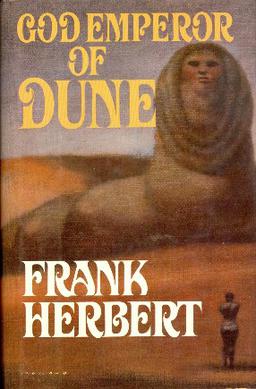
God Emperor of Dune is a science fiction novel by American writer Frank Herbert, published in 1981. The fourth in his Dune series of six novels, it was ranked as the No. 11 hardcover fiction best seller of 1981 by Publishers Weekly.

Heretics of Dune is a 1984 science fiction novel by Frank Herbert, the fifth in his Dune series of six novels. It was ranked as the No. 13 hardcover fiction best seller of 1984 by The New York Times.
A future history is a postulated history of the future and is used by authors of science fiction and other speculative fiction to construct a common background for fiction. Sometimes the author publishes a timeline of events in the history, while other times the reader can reconstruct the order of the stories from information provided therein.
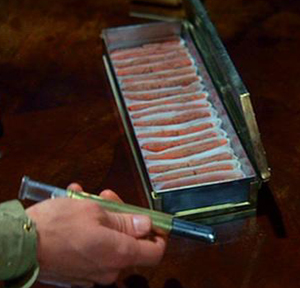
Melange, often referred to as "the spice", is the fictional psychedelic drug central to the Dune series of science fiction novels by Frank Herbert and derivative works.

The Spacing Guild is an organization in Frank Herbert's science fiction Dune universe which possesses a monopoly on interstellar travel and banking. Guild Navigators use the drug melange to achieve limited prescience, a form of precognition which allows them to successfully navigate "folded space" and safely guide enormous starships called heighliners across interstellar space instantaneously.

Leto II Atreides is a fictional character from the Dune universe created by Frank Herbert. Born at the end of Dune Messiah (1969), Leto is a central character in Children of Dune (1976) and is the title character of God Emperor of Dune (1981). The character is brought back as a ghola in the Brian Herbert/Kevin J. Anderson sequels which conclude the original series, Hunters of Dune (2006) and Sandworms of Dune (2007). Leto also appears as a child in the prequel The Winds of Dune (2009).
The Penitent Thief, also known as the Good Thief, Wise Thief, Grateful Thief, or Thief on the Cross, is one of two unnamed thieves in Luke's account of the crucifixion of Jesus in the New Testament. The Gospel of Luke describes him asking Jesus to "remember him" when Jesus comes into his kingdom. The other, as the impenitent thief, challenges Jesus to save himself and both of them to prove that he is the Messiah.
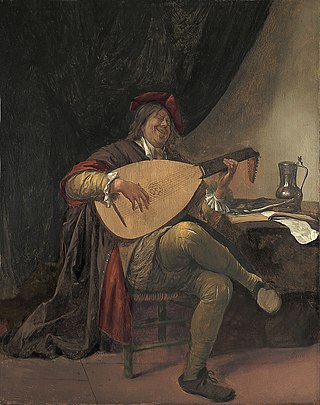
Jan Havickszoon Steen was a Dutch Golden Age painter, one of the leading genre painters of the 17th century. His works are known for their psychological insight, sense of humour and abundance of colour.

Sinterklaas or Sint-Nicolaas is a legendary figure based on Saint Nicholas, patron saint of children. Other Dutch names for the figure include De Sint, De Goede Sint and De Goedheiligman. Many descendants and cognates of "Sinterklaas" or "Saint Nicholas" in other languages are also used in the Low Countries, nearby regions, and former Dutch colonies.

Dune, also known as the Dune Chronicles, is an American science fiction media franchise that originated with the 1965 novel Dune by Frank Herbert and has continued to add new publications. Dune is frequently described as the best-selling science fiction novel in history. It won the inaugural Nebula Award for Best Novel and the Hugo Award in 1966, and was later adapted into a 1984 film, a 2000 television miniseries, and a 2021 film. Herbert wrote five sequels, the first two of which were concomitantly adapted as a 2003 miniseries. Dune has also inspired tabletop games and a series of video games. Since 2009, the names of planets from the Dune novels have been adopted for the real-world nomenclature of plains and other features on Saturn's moon Titan.

Dumarest of Terra is a 33-volume series of science fiction novels by Edwin Charles Tubb. Each story is a self-contained adventure, but throughout the series, Earl Dumarest, the protagonist, searches for clues to the location of his home world, Earth.
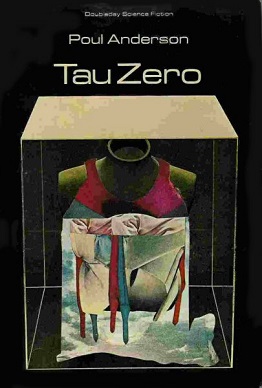
Tau Zero is a hard science fiction novel by American writer Poul Anderson. The novel was based upon the short story "To Outlive Eternity" appearing in Galaxy Science Fiction in 1967. It was first published in book form in 1970. The book is a quintessential example of "hard sci-fi", as its plot is dominated by futuristic technology grounded in real physics principles. It was nominated for the Hugo Award for Best Novel in 1971.
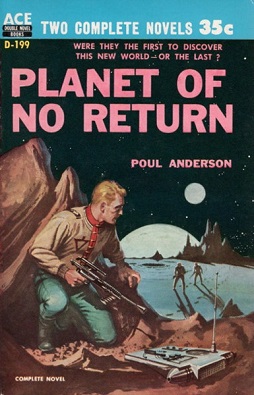
Question and Answer is a science fiction novel by American writer Poul Anderson. It originally appeared in the June and July 1954 issues of magazine Astounding Science Fiction, and was later reprinted in 1956 as part of Ace Double D-199 under the title Planet of No Return, and again as a stand-alone Ace novel in February 1978 under the original title.

Line of Delirium and Emperors of Illusions are two 1995 books of a space opera trilogy by Russian science fiction writer Sergey Lukyanenko. The story is told in third person, usually from the viewpoint of Kay Dutch — a professional bodyguard living in a post-war galaxy. The names of races, planets, and several leaders are borrowed from the computer game Master of Orion, although everything else in the trilogy is original, even the physical descriptions of several races.

The Viagens Interplanetarias series is a sequence of science fiction stories by L. Sprague de Camp, begun in the late 1940s and written under the influence of contemporary space opera and sword and planet stories, particularly Edgar Rice Burroughs's Martian novels. Set in the future in the 21st and 22nd centuries, the series is named for the quasi-public Terran agency portrayed as monopolizing interstellar travel, the Brazilian-dominated Viagens Interplanetarias. It is also known as the Krishna series, as the majority of the stories belong to a sequence set on a fictional planet of that name. While de Camp started out as a science fiction writer and his early reputation was based on his short stories in the genre, the Viagens tales represent his only extended science fiction series.

Ancient astronauts have been addressed frequently in science fiction and horror fiction. Occurrences in the genres include:

Zwarte Piet, also known in English by the translated name Black Pete, is the companion of Saint Nicholas in the folklore of the Low Countries. The earliest known illustration of the character comes from an 1850 book by Amsterdam schoolteacher Jan Schenkman in which he was depicted as a black Moor.
Van Rijn is a Dutch toponymic surname meaning "from (the) Rhine river". Common spelling variations are Van Rhijn and the anglicized version Van Ryn. People with this surname include:
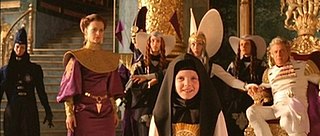
Multiple organizations of the Dune universe dominate the political, religious, and social arena of the setting of Frank Herbert's Dune series of science fiction novels, and derivative works. Set tens of thousands of years in the future, the saga chronicles a civilization which has banned computers but has also developed advanced technology and mental and physical abilities through physical training, eugenics and the use of the drug melange. Specialized groups of individuals have aligned themselves in organizations focusing on specific abilities, technology and goals. Herbert's concepts of human evolution and technology have been analyzed and deconstructed in at least one book, The Science of Dune (2008). His originating 1965 novel Dune is popularly considered one of the greatest science fiction novels of all time, and is frequently cited as the best-selling science fiction novel in history. Dune and its five sequels by Herbert explore the complex and multilayered interactions of politics, religion, ecology and technology, among other themes.
We've a three-point civilization: the Imperial Household balanced against the Federated Great Houses of the Landsraad, and between them, the Guild with its damnable monopoly on interstellar transport.